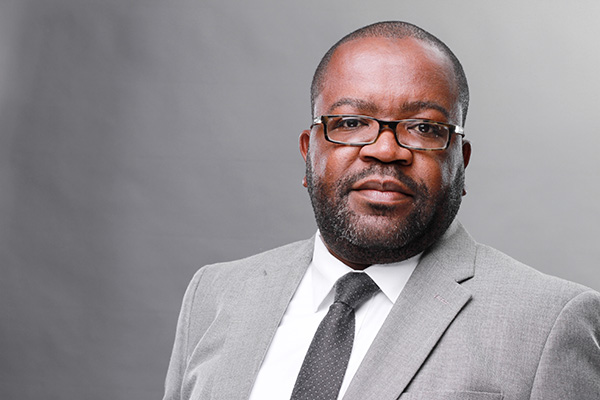Petrol for your iPad: a visit to Shaanika Secondary School
 School Name: Shaanika Oshilongo Senior Secondary School
School Name: Shaanika Oshilongo Senior Secondary SchoolLocation: Okahao, Onganjera
Number of Students: 650 (students & teachers live at the school in a hostel, this is the norm for secondary schools in Namibia)
Number of Teachers: 26
Number of Computers: One computer lab with approximately 30 computers that have Internet connection
Other technologies: photocopy machine, duplication machine, facsimile & telephone
Grades: 10 – 12
The Process
I used the steps/questions below to guide the class visit:
- Step 1 – Familiarisation/Creative Exercise (Ask the students to come up with a list of features that they want their ideal phone to have)
- Step 2 – “What do you like/dislike about the iPhone (Positives/Negatives of the iPhone)?”
- Step 3 – “If you could take the iPad home, what would you use it for?”
- Step 4 – “What do you like or dislike about the iPad (Positives/Negatives of the iPad)?”
The Ideal phone:
After introductions and a general conversation about technology, I told the students that they had five hundred million dollars to create a phone of their choice. Although I went to three classes, I combined the ideas for the ideal phone into one list because the thoughts were fairly the same (If you’ve read my previous posts, you may notice a pattern/similarity).
The student wanted their phone to have the following features/capabilities:
- Internet
- Bluetooth
- Camera
- Mp3 Player
- TV
- Laptop
- Touch Screen
- Games
- Loudspeakers
- Memory Card
- Information about every Country
Physically close yet technologically far apart
Located in the northern part of Namibia, Shaanika is about 1 kilometer away from Nangombe Combined School which I visited two weeks earlier and detailed the experience in an earlier post. The two schools are close in physical proximity; however, the experiences I had while visiting were different. Some of the differences could be as a result of the age groups (Nangombe goes up to grade 10 and Shaanika begins at grade 10 through 12) and others could perhaps be explained by the technology available at each school.
Main difference: Technology
 The first noticeable difference is that the students at Shaanika are little more exposed to technology. The secondary school has a computer lab with approximately 30 computers, a projector, printer and Internet connectivity. (A week later I would meet with the founder of SchoolNet Namibia who informed me that it was one of the first schools in Northern Namibia to be fitted with computers). Other than computer classes that are taught at the school, students are also able to use computers during the breaks or when the lab is not in use (On the day of my visit, the IT teacher accompanied me to all the classrooms since his classes were being taught by a WorldTeach volunteer – Dana Bays from Oregon. You can read her blog here to get a different perspective on the school and ICT – http://danabays.blogspot.com/).
The first noticeable difference is that the students at Shaanika are little more exposed to technology. The secondary school has a computer lab with approximately 30 computers, a projector, printer and Internet connectivity. (A week later I would meet with the founder of SchoolNet Namibia who informed me that it was one of the first schools in Northern Namibia to be fitted with computers). Other than computer classes that are taught at the school, students are also able to use computers during the breaks or when the lab is not in use (On the day of my visit, the IT teacher accompanied me to all the classrooms since his classes were being taught by a WorldTeach volunteer – Dana Bays from Oregon. You can read her blog here to get a different perspective on the school and ICT – http://danabays.blogspot.com/).
Secondary Difference: Been there done that…actually, not really
One thing that stood out during my interactions was the hesitancy by students at the school to admit what they didn’t know. At Nangombe, the majority of students seemed excited to participate in conversations about technology, while at Shaanika the students where more reserved and there seemed to be a need by some to appear “cool” by pretending to know more than others. From a student development theory perspective, this was not that surprising. In their high school age through beginning of undergraduate, many students are more concerned with the opinions of their peers.
 There were students at the school who had used the iPad in the past because the WorldTeach volunteer has an iPad, which she has used as a reward for well-behaved classes at the end of class periods. Moreover, since the students have access to the web, they are able to get as much information about latest technology as anyone in the world. However, further discussion revealed that although some may have heard of or had seen the devices, most had never interacted with them and some seemed tom make claims just to show off to their peers. This was a challenge I did not expect because in every class I had to first deal with the “been there done that students”, and find a way to involve the students who were interested but did not want to seem dumb because the questions they ask or the ideas they gave.
There were students at the school who had used the iPad in the past because the WorldTeach volunteer has an iPad, which she has used as a reward for well-behaved classes at the end of class periods. Moreover, since the students have access to the web, they are able to get as much information about latest technology as anyone in the world. However, further discussion revealed that although some may have heard of or had seen the devices, most had never interacted with them and some seemed tom make claims just to show off to their peers. This was a challenge I did not expect because in every class I had to first deal with the “been there done that students”, and find a way to involve the students who were interested but did not want to seem dumb because the questions they ask or the ideas they gave.
Petrol for your iPad….
 The main challenge for any computing technology in parts of Namibia that are far from the main cities, is how to power devices when the battery dies. Some businesses have set up charge centres where the community can pay to for their devices to be charged. Others rely on neighbours who have installed solar power in their houses.
The main challenge for any computing technology in parts of Namibia that are far from the main cities, is how to power devices when the battery dies. Some businesses have set up charge centres where the community can pay to for their devices to be charged. Others rely on neighbours who have installed solar power in their houses.
In one of the classes at Shaanika we were discussing the limits of the iPad’s applicability to the environment. Again, the issue of electricity came up with regards to powering the device should a student take it home. We went through a redesign exercise of what could be done differently and although the majority argued for solar power, there was one student who had an innovative solution.
The student proposed that the iPad be powered by Petrol like a car because that is available everywhere in Namibia. The way it would work is that the user would pour petrol in the iPad as in a car and when it runs empty, one could just go to the petrol station to refill. It may seem funny or perhaps silly at first glance, but I was happy to see that the student offering a creative solution and making use of what is available and contextually appropriate in his environment.
Date written: 12 July 2010
Word count: 993

